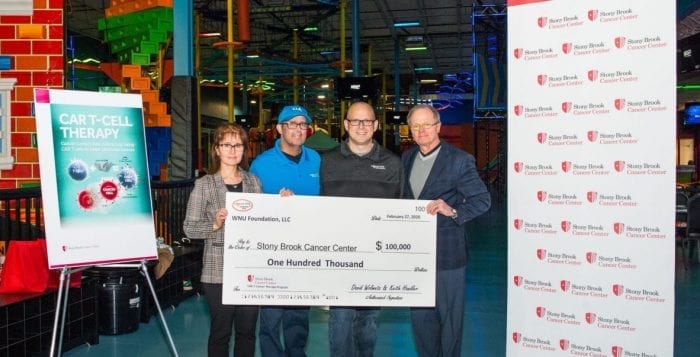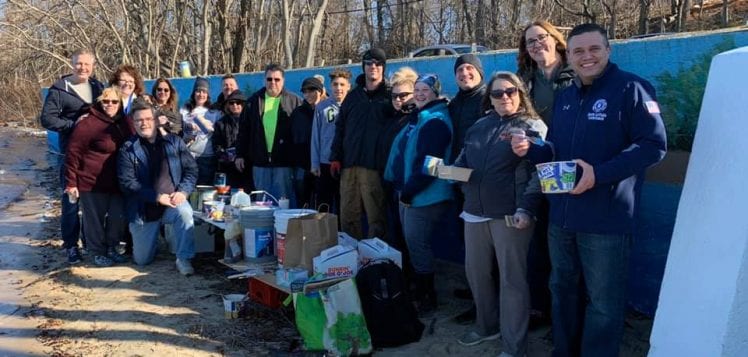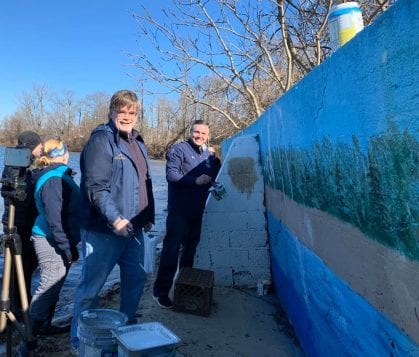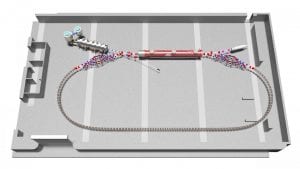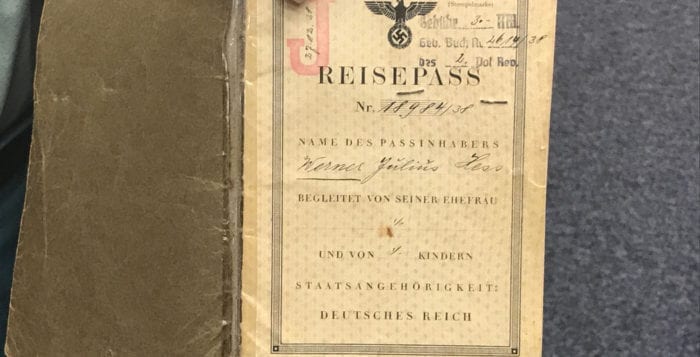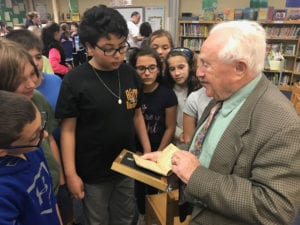While receiving treatment for leukemia, Dave Wolmetz distracted himself with plans to open an indoor adventure park, and now that business is allowing him to give back to the center that enabled him to carry on with his dream.
Wolmetz, of Commack, and his business partner and childhood friend, Keith Handler, have pledged to raise $100,000 for the Hematologic Malignancies and Stem Cell Transplant team at Stony Brook University Cancer Center over the course of five years. On Feb. 27, they presented doctors and nurses with the first installment of $20,000 at their Urban Air Lake Grove adventure park. The business opened in November 2019 and includes an indoor coaster, ropes course, indoor playground and more.
Dr. Huda Salman, director of both the Hematologic Malignancies Service and the CAR T Cellular Therapy Program, said Urban Air’s pledge will be a big help to the research program, which recently received approval for its first trial by the U.S. Food and Drug Administration.
At the Feb. 27 press conference, Wolmetz called the members of the medical team at Stony Brook “heroes.” The date of the installment presentation had a special meaning for him.
“My motivation was to recognize that I have a second opportunity around — second birthday today, Feb. 27, it’s the date of my stem cell transplant,” he said. “And this serves my purpose on the Earth at this point, to give back and create lives for cancer survivors.”
Wolmetz underwent total body irradiation and chemotherapy at the hospital after being diagnosed with acute lymphocytic leukemia in 2018. His treatment at Stony Brook inspired him to start the nonprofit Why Not Us Foundation, with the hopes of raising funds for the chimeric antigen receptor T-cell research program at the cancer center. The program supports Stony Brook scientists who work on developing personalized cell therapy to treat blood cancers.
Wolmetz said patients spend a lot of time alone and planning Urban Air with Handler helped him get through some difficult times.
The business partners, who both graduated from Ward Melville High School in 1988, said they were tired of seeing so many people engaged in a digital world. It inspired them to create a place where children could get out and be physical, which plays into healthy habits.
“We talked about things over the years, but we never got serious until two years ago, and one thing led to another,” Handler said, adding the best reviews they get are when parents say they got their best night’s sleep because their children slept in after running around the indoor park.
Wolmetz and Handler said the decision to donate locally was an easy one for them. Wolmetz said it was excellent medical care, a positive attitude and faith that got him to a place where you could think of other things, including giving back to those going through the same experience that he had.
“We both agreed it was an important initiative that when we serve the community with our business to give a percentage and proceeds back to a meaningful campaign,” he said.
For an appointment with Stony Brook University Cancer Center, call 631-722-2623. For information about the CD4 CAR T-cell clinical trial, call 631-728-7425.

